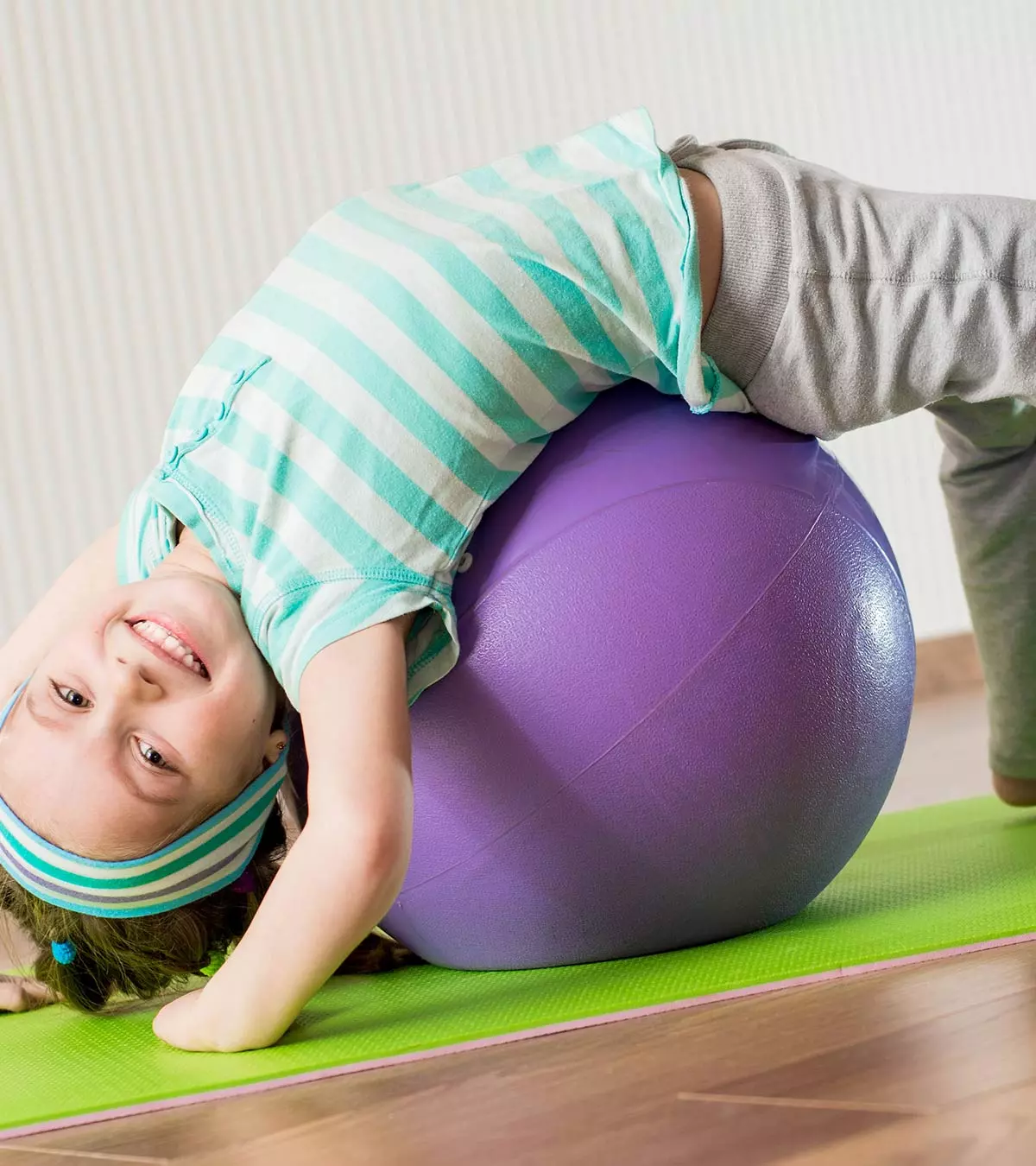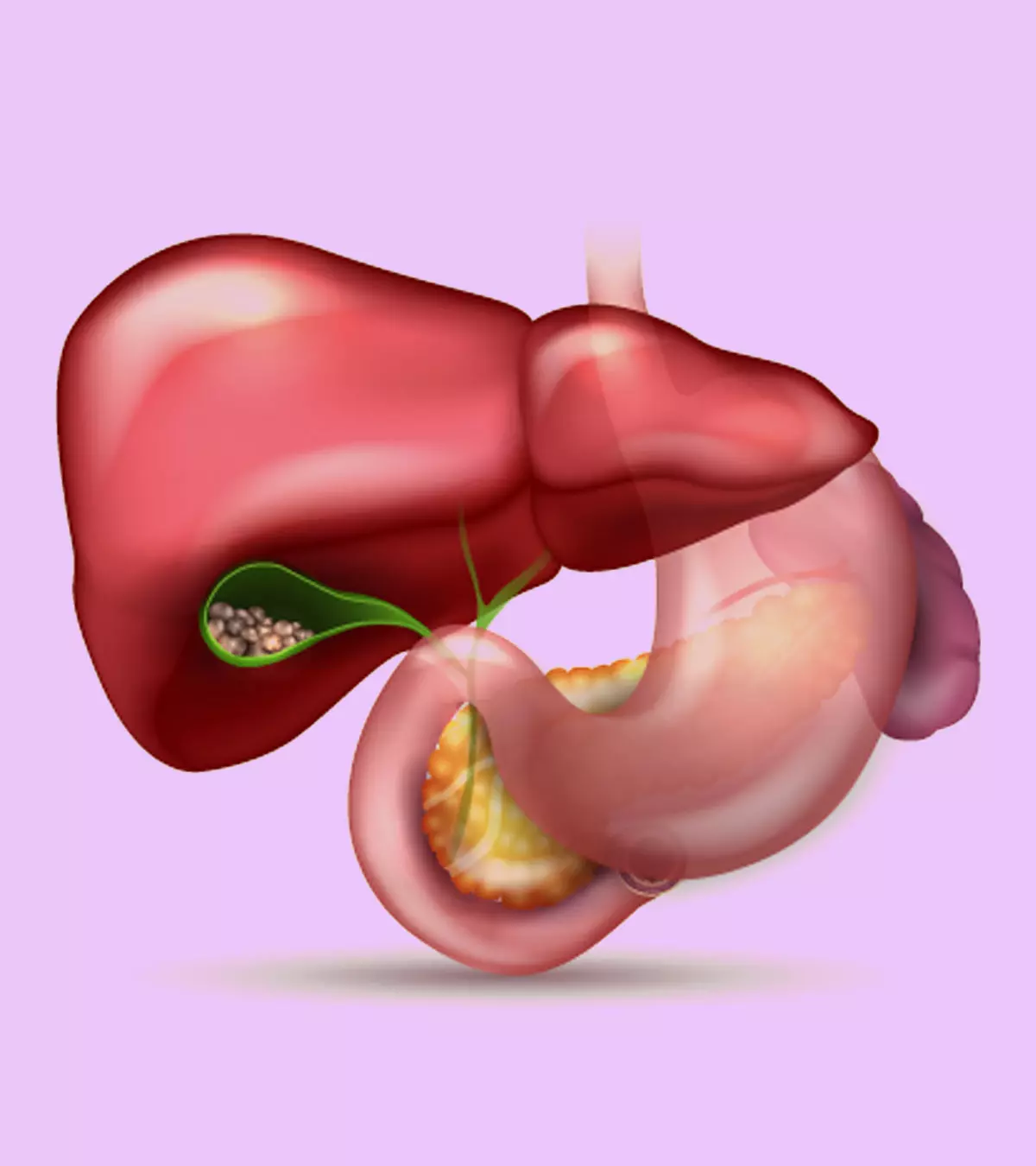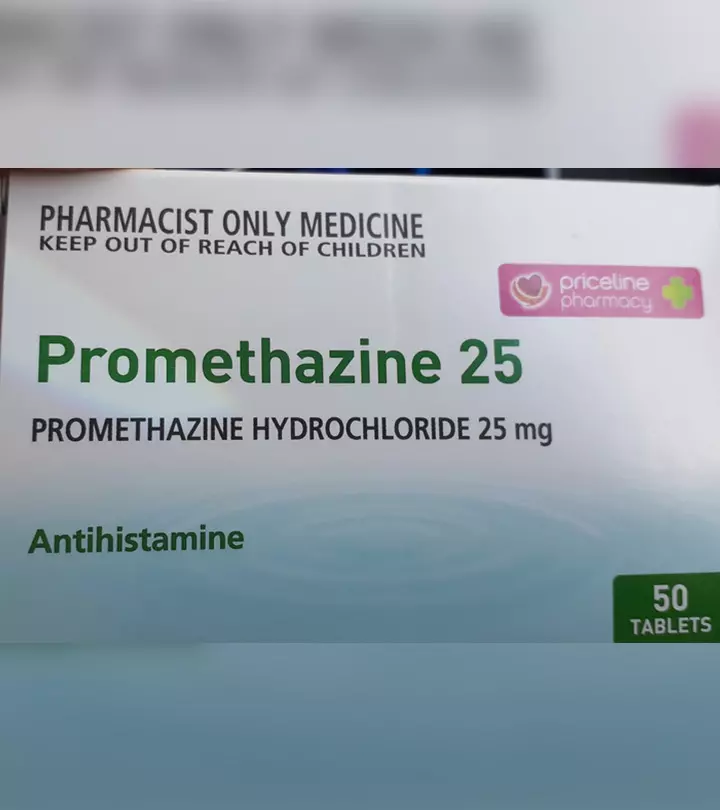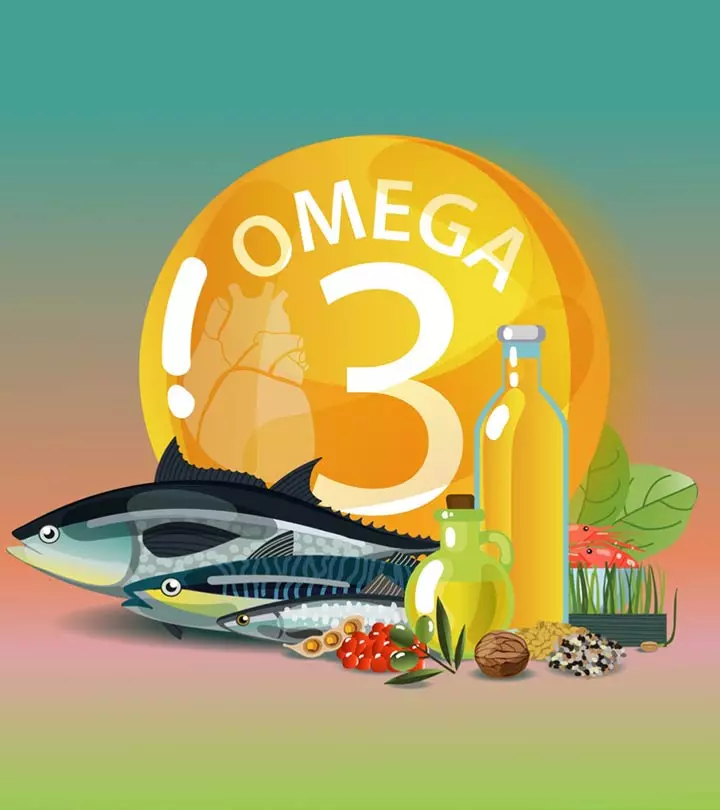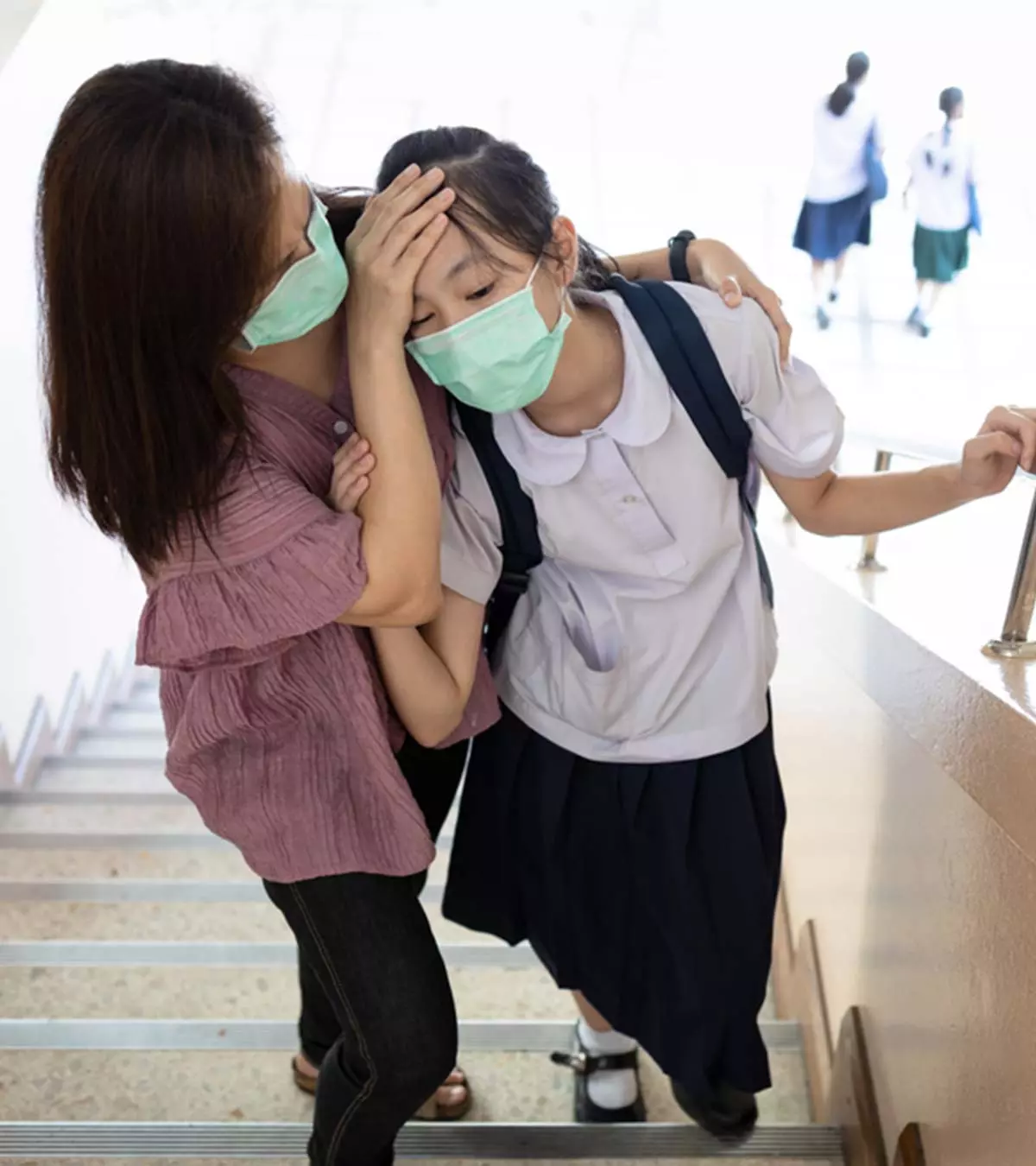
Image: iStock

Diarrhea in children is a frequent passing of watery stools three or more times a day. It can be a symptom and a less serious condition (1). The most common cause of diarrhea is viral gastrointestinal infections. However, celiac diseaseiAn autoimmune and genetic condition characterized by an immune reaction to gluten, the protein found in barley, rye, and wheat that occurs genetically may also cause it.
Depending on the underlying cause, diarrhea can be acute, persistent, or chronic, and mild or severe. Generally, diarrhea clears up by itself within a few days. However, timely treatment and management are crucial, especially in young children who can lose fluids rapidly. Therefore, parents must recognize the causes and warning signs of diarrhea to prevent severe complications.
Read on to know its types, causes, treatment, risks, and prevention of diarrhea in children.
Key Pointers
- Diarrhea in children is of three types and can occur due to certain infections or changes in the diet.
- Children with diarrhea commonly experience loose stool along with stomach pain, fever, or vomiting.
- Blood and lab tests along with an X-ray may be done to assess the condition.
- If the symptoms persist or worsen, it may lead to complications such as malnourishment and dehydration.
- The doctor may prescribe certain medications or recommend simple dietary changes and rehydration therapy depending on the symptoms.
Types Of Diarrhea In Children
Diarrhea is usually categorized into the following three types (2).
- Acute (short-term) diarrhea: Lasts for one to two days and then resolves on its own.
- Persistent diarrhea: Lasts for more than two weeks and less than four weeks.
- Chronic (long-term) diarrhea: Lasts for four weeks or longer and is usually due to some underlying disease.
Usually, acute diarrhea is more common than the other two diarrhea types. However, how long diarrhea will last depends on its cause.
Symptoms Of Diarrhea
Passing loose, watery stool three or more times a day is the main symptom of diarrhea.
Children could also have one or more additional symptoms (3).
- Vomiting or nausea
- Stomach cramps with/without bloating
- Fever
- Appetite loss
- Some children can have blood in stool with diarrhea which is called dysentery and is a sign of severe bacterial infection.
The severity of diarrhea and the accompanying symptoms can vary from one child to another and depend on the underlying cause. However, if you notice signs of dehydration, such as a dry mouth, sunken eyes, reduced urine output, or fatigue, seek prompt medical advice for your child.
Causes Of Diarrhea In Children
The causes of acute and persistent diarrhea are usually different from those of chronic diarrhea.
When children come in contact with contaminated food or touch a surface that has been already contaminated by the fecal matter of an infected person, there is a high risk of coming in contact with pathogens. Here’s a brief overview of the causes of acute and persistent diarrhea (4).
Common causes of acute and persistent diarrhea
- Dietary changes: Certain foods, such as fruits and their juices, contain fructose, which can have laxative effects in high amounts. Thus, consuming large amounts of these foods can cause gastrointestinal disturbance, especially in young children, resulting in diarrhea.
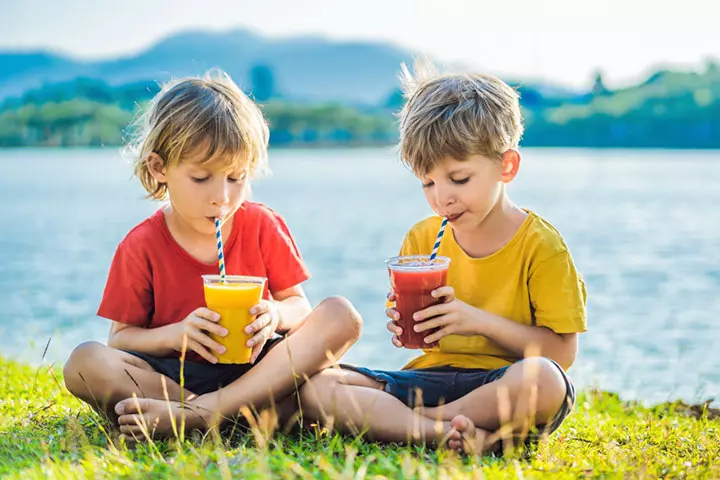
- Viral infections: Viral gastroenteritisiInfectious disease leading to inflammation of the digestive tract causing symptoms such as abdominal pain, diarrhea, and nausea (stomach flu) in children is the most common cause of diarrhea. There are several different types of viruses that can cause viral gastroenteritis. The most common ones are norovirus, rotavirus, adenovirus, and astrovirus (5).
- Bacterial infections: Campylobacter, Escherichia coli (E. coli), Salmonella, and Shigella are common bacteria that cause bacterial infection. The consumption of food contaminated by these bacteria can cause symptoms of gastrointestinal infection (food poisoning), such as diarrhea or sometimes dysentery.
- Parasitic infections: Parasites are microbes that stay in or on their host and derive food from the body for survival. A child can get a parasitic infection when they consume foods or drinks contaminated with parasites. Some of the parasites that cause diarrhea include Cryptosporidium enteritis, Entamoeba histolytica, and Giardia lamblia.
Children who travel frequently can experience traveler’s diarrhea caused by consuming contaminated food or drinks. Also, children staying in daycare centers and those swimming in lakes and ponds are at a higher risk of contracting infections that cause diarrhea.
Common Causes Of Chronic Diarrhea
Unlike acute and persistent diarrhea, chronic diarrhea happens due to diseases or disorders (6).
- Chronic infections: Most microbial infections resolve with prompt care and treatment. However, sometimes they may turn severe, and some children may experience problems digesting carbohydrates or proteins in foods. Due to these issues, the children can have prolonged diarrhea.
- Food allergies and intolerances: Milk, egg, gluten, and peanut allergies and fructose and lactose intolerance are some conditions that may affect a child’s digestive system and cause diarrhea. When a child eats food to which they are allergic/intolerant, they get diarrhea with other symptoms, such as abdominal cramps.
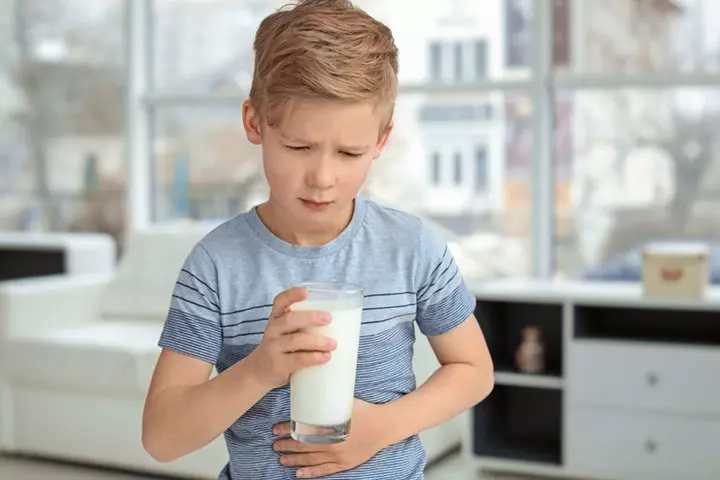
- Digestive tract problems: Inflammatory bowel disease (ulcerative colitisiA chronic condition leading to inflammation and sores in the large intestine due to an abnormal immune response and Crohn’s diseaseiAn autoimmune disorder of the digestive system characterized by inflammation, pain, and diarrhea ) is a digestive tract issue where chronic gut inflammation affects proper digestion. It can cause the affected person to experience chronic diarrhea with abdominal pain and weight loss. This condition is more common in teens and tweens.
Besides these, abdominal surgery and chronic use of certain medicines, such as antibiotics and antacids, may also cause chronic diarrhea in children.
Diagnosis Of Diarrhea In Children
Diagnosing acute diarrhea doesn’t require tests. However, if a child shows signs of dehydration, the pediatrician may order blood tests to determine the extent of dehydration. If the child has blood in stools, the doctor may order a stool test or stool culture to identify the specific cause. However, in many cases, the precise cause of acute diarrhea isn’t identified (3).
If a child has persistent or chronic diarrhea, the doctor may order the following tests to determine the cause (3).
- Blood test: Blood tests can show a child’s nutritional status, assess dehydration level, and determine if the child has inflammation in the body.
- Stool culture: A stool culture helps identify the exact microbe, that is, bacteria, virus, or parasite causing chronic diarrhea.
- X-ray: An X-ray can help detect liver and gastrointestinal tract problems that may be contributing to diarrhea.
Your healthcare provider may also order an upper endoscopy and/or colonoscopy to access the inflammation site, perform a biopsy, and collect a sample. These tests help diagnose the precise cause of chronic diarrhea.
 Quick fact
Quick factTreatment For Diarrhea In Children
According to reports released by the United Nations Children’s Fund (UNICEF), diarrhea is the cause of approximately nine percent of mortalities in children below five years of age globally. Therefore, it is important to avail the proper treatment measures to avoid fatal consequences.
The treatment for diarrhea depends on its type (acute or chronic), severity (mild or severe), and accompanying symptoms, such as fever or vomiting. Generally, children with mild, acute diarrhea and no vomiting need no medication or dietary changes. Children with mild diarrhea with vomiting, persistent diarrhea, or chronic diarrhea may require the following treatments (7) (8).
1. Dietary changes
The child may be required to shift to a soft diet containing easily digestible foods, such as soup and rice, to give rest to their digestive system. Additionally, you need to feed them more fluids, such as buttermilk and coconut water, to keep them hydrated. Once vomiting reduces, resume feeding your child an age-appropriate, well-balanced diet consisting of fruits, vegetables, meat, unsweetened yogurt, and complex carbs. Additionally, instruct children to avoid eating the following foods as they can make diarrhea worse.
- High-fiber foods, such as apple and pear
- Milk products, such as milk, cheese, and ice cream
- Fatty, greasy, and spicy foods
Dietary changes play an essential role in treating chronic diarrhea due to conditions such as allergies and inflammatory bowel disease, which do not have a definite treatment and require long-term management.
 Quick tip
Quick tip2. Rehydration
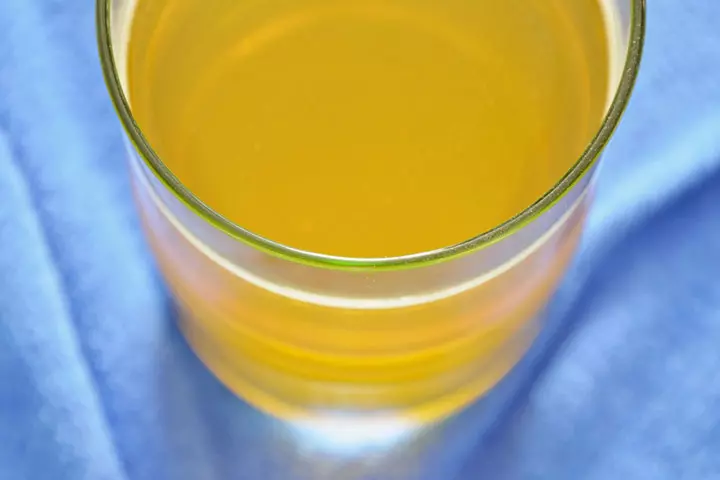
Most children respond to dietary changes and recover. However, if diarrhea persists or worsens, the child will need rehydration therapy. The therapy involves the use of electrolyte solution or oral rehydration solution (ORS) that can help replenish lost fluid and electrolytes.
Feed small amounts of ORS after each vomiting episode.
If the child passes loose, watery stools every one to two hours or more, it is a sign of severe diarrhea. In such cases, the child would need hospitalization with the administration of intravenous fluids (IV) to prevent the complications of diarrhea.
Note: Experts advise against using homemade electrolyte solutions. They recommend that children be given over-the-counter rehydration solutions available in powder and premixed forms (1).
 Quick tip
Quick tip| Child’s weight | Minimum liquid to give per hour |
| 7-10 lbs | 2 ounces/ 3 tablespoons/ ¼ cup |
| 11-15 lbs | 1.5 ounces or 5 tablespoons |
| 16-20 lbs | 3.5 ounces or ½ cup |
| 21-40 lbs | 5.5 ounces or ¾ cup |
| 41-60 lbs | 10 ounces or 1 ¼ cup |
3. Medication
The doctor may prescribe medications, such as antibiotics, to fight infection and other medicines to treat the underlying problem. Additionally, the doctor may suggest probiotics to help overcome dysbiosis (microbial imbalance). Check with your doctor if your child would need zinc supplements as they reduce the duration of diarrhea by 25 percent (9).
Note: Over-the-counter (OTC) anti-diarrheal medicines can be harmful to children. Talk to your doctor before you give any medicine to your child.
Possible Complications Of Diarrhea
Timely treatment of diarrhea can help children feel better. However, the following complications may occur in the absence of timely treatment (2).
1. Dehydration: Frequent passage of loose stools causes loss of fluids and electrolytes, leading to dehydration. Here are some of the notable signs of dehydration in children (4).
- Thirst
- Less urination
- Lethargy
- Dry and loose skin
- Sunken eyes or cheeks
- Dry mouth and tongue
- No tears when crying
2. Malabsorption: Persistent or severe diarrhea can disturb food digestion and absorption, causing malabsorption. Chronic malabsorption can make a child malnourished. Malnourishment in children hampers their growth and development. Here are some of the common symptoms of malabsorption in children.
- Bloating or belching
- Appetite change
- Loose, greasy, foul-smelling stools
- Poor weight gain or considerable weight loss
Prevention Of Diarrhea In Children
Diarrhea is preventable in most cases through the following preventive measures.
- Maintain optimum sanitation and hygiene while handling, cooking, and storing food at home to prevent bacterial contamination of consumables. Tell your child to avoid consuming foods and drinks sold at unhygienic places.
- Disinfect frequently touched surfaces, such as doorknobs, using a disinfectant. Wash your kitchen counter and utensils using warm soapy water to keep them clean and germ-free.
- Follow optimal personal hygiene for kids. Instruct children to maintain personal hygiene and follow simple steps, such as hand-washing with soap and water for at least 20 seconds before and after eating. If washing hands isn’t possible, ask them to use a hand sanitizer.

- Educate children to avoid consuming raw or unpasteurized foods, such as milk, cheese, fresh fruit juices, and alfalfa sprouts.
- Vaccinate children against rotavirus, one of the most common causes of diarrhea in infants and young children.
Besides these, avoid the non-prescribed use of antibiotics that can also cause diarrhea.
When To See A Doctor
See your doctor immediately if your child has diarrhea with any of the following symptoms (1).
- Fever lasting longer than 24 to 48 hours
- Bloody stools
- Vomiting lasting more than 12 to 24 hours
- Vomit that looks green, tinged with blood, or like coffee grounds
- Stomach or belly that looks swollen and is painful
- Unable to eat or drink anything
- Rash or jaundice (yellow color of skin and eyes)
 Quick tip
Quick tipFrequently Asked Questions
1. Do bananas treat diarrhea in kids?
Yes, bananas are recommended during episodes of diarrhea in children (10). Bananas are high in potassium, which helps restore electrolyte balance (11). Cooked green bananas have been found to hasten recovery from acute watery diarrhea in children (12).
2. Is diarrhea common in children?
Yes, diarrhea is considered a common symptom of illness in children (1).
3. Is diarrhea in children contagious?
Viral gastroenteritis can be highly infectious and may spread quickly when an individual comes in contact with the vomit or feces of an infected person (person-to-person contact with someone with a virus on hands, contaminated objects, food, or drinks). The infection may spread in the air when people vomit (15).
4. What should I do if my child has bloody diarrhea?
Seek immediate medical help if your child has bloody diarrhea. The condition is usually a sign of an infection that causes damage to the intestine and carries a substantial risk of severe outcomes (16).
5. How long should a child with diarrhea be kept at home?
It is advisable to keep your child at home until their diarrhea has stopped for at least two consecutive days (17).
Diarrhea in children may be caused by various factors such as bacterial, viral, or parasitic infection, indigestion, or gastrointestinal disorder and is not a disease itself. Mild cases can be managed by taking a balanced, easily digestible diet and ensuring proper hydration. Preventing dehydration is crucial, especially in children, and medications may be given only after consulting a doctor. Maintaining hygienic conditions while cooking and storing food can help prevent germs from infecting children and causing diarrhea. Teaching children personal hygiene, such as proper hand-washing techniques, is a must.
Infographic: Long-term Autoimmune Conditions That Cause Diarrhea
It is common for infections and dietary changes to cause diarrhea in children. However, diarrhea may also occur due to autoimmune diseases. This infographic presents chronic autoimmune conditions that often lead to diarrhea in children.
Some thing wrong with infographic shortcode. please verify shortcode syntax
Illustration: Diarrhea In Children: Types Symptoms Causes & Treatment
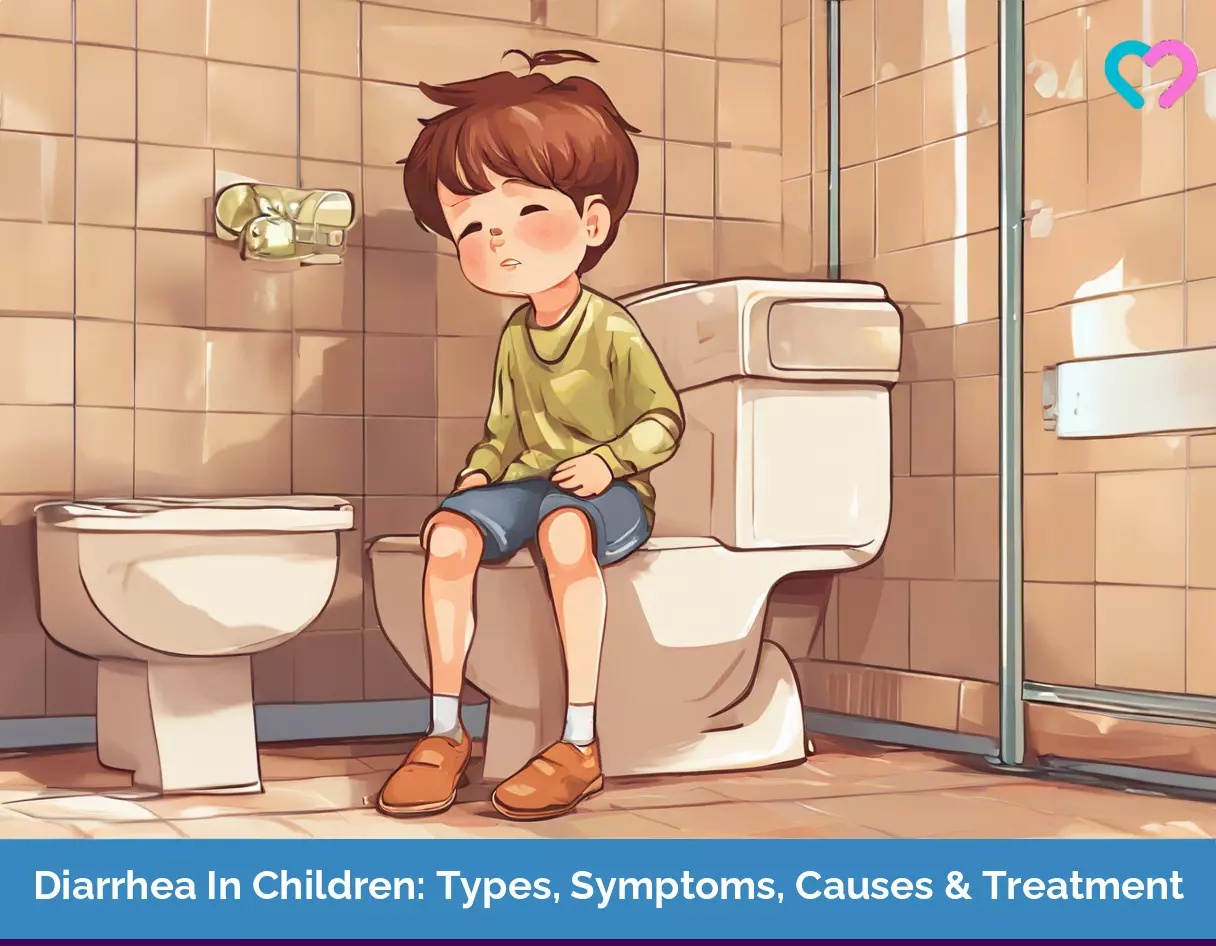
Image: Stable Diffusion/MomJunction Design Team
Children sometimes get ill and may express symptoms such as vomiting and diarrhea. Watch this video to learn tips on how to take care of your child in such cases. Learn how to keep them hydrated, what foods you should avoid giving them, and when you should seek medical attention.
References
- Diarrhea in Children: What Parents Need to Know.
https://www.healthychildren.org/English/health-issues/conditions/abdominal/Pages/Diarrhea.aspx - Definition & Facts for Diarrhea.
https://www.niddk.nih.gov/health-information/digestive-diseases/diarrhea/definition-facts - Diarrhea in Children.
https://gi.org/topics/diarrhea-in-children/ - Symptoms & Causes of Diarrhea.
https://www.niddk.nih.gov/health-information/digestive-diseases/diarrhea/symptoms-causes - Symptoms & Causes of Viral Gastroenteritis (“Stomach Flu”).
https://www.niddk.nih.gov/health-information/digestive-diseases/viral-gastroenteritis/symptoms-causes - Symptoms & Causes of Chronic Diarrhea in Children.
https://www.niddk.nih.gov/health-information/digestive-diseases/chronic-diarrhea-children/symptoms-causes - Treatment for Diarrhea.
https://www.niddk.nih.gov/health-information/digestive-diseases/diarrhea/treatment - Eating, Diet, & Nutrition for Diarrhea.
https://www.niddk.nih.gov/health-information/digestive-diseases/diarrhea/eating-diet-nutrition - Diarrhoeal disease.
https://www.who.int/news-room/fact-sheets/detail/diarrhoeal-disease - When your child has diarrhea.
https://medlineplus.gov/ency/patientinstructions/000693.htm - What sort of foods are good during diarrhoea?
http://rehydrate.org/cgi-sys/suspendedpage.cgi - Dhandapany Gunasekaran et al.; (2025); Effect of Green Banana (Musa paradisiaca) on Recovery in Children With Acute Watery Diarrhea With No Dehydration: A Randomized Controlled Trial.
https://idp.springer.com/authorize?response_type=cookie&client_id=springerlink&redirect_uri=https%3A%2F%2Flink.springer.com%2Farticle%2F10.1007%2Fs13312-020-2063-8 - Diarrhea in Children
https://www.hopkinsmedicine.org/health/conditions-and-diseases/diarrhea-in-children#:~:text=This%20is%20caused%20by%20having,child%20from%20doing%20daily%20activities. - Diarrhea
https://www.nationwidechildrens.org/conditions/diarrhea#:~:text=With%20moderate%20to%20severe%20diarrhea,most%20pharmacies%20without%20a%20prescription. - Viral gastroenteritis fact sheet.
https://www.health.nsw.gov.au/Infectious/factsheets/Pages/viral-gastroenteritis.aspx# - Maral F. Thabit and Radhwan R Hussian; (2025); Acute Infective Bloody Diarrhea in Children Below Five Years Admitted to Children Welfare Hospital in Medical City – Baghdad During 2015.
https://ijop.net/index.php/mlu/article/view/474 - Diarrhoea and vomiting.
https://www.nhs.uk/conditions/diarrhoea-and-vomiting/
Community Experiences
Join the conversation and become a part of our nurturing community! Share your stories, experiences, and insights to connect with fellow parents.
Read full bio of Dr. Anuradha Bansal
Read full bio of Swati Patwal
Read full bio of Rohit Garoo
Read full bio of Dr. Joyani Das





